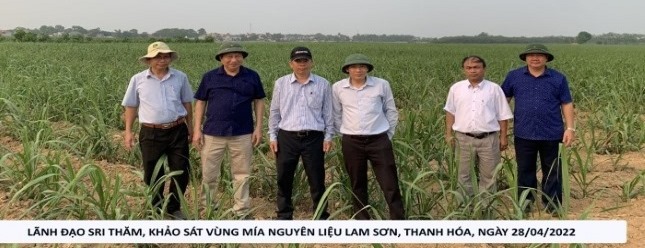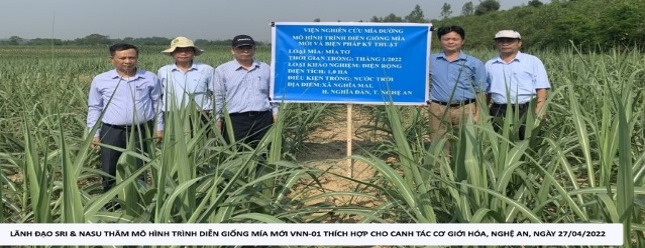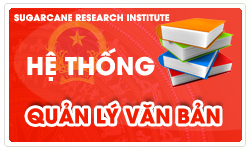Xem TIN TỨC
Sugarcane Fertilizer Recommendations for 2018
Friday - 25-05-2018 | 09:00:47 AM
Friday - 25-05-2018 | 09:00:47 AM
TIN MỚI NHẤT
bình luận mới
Đoàn Quang Phong
Gửi TS Đỗ Ngọc Diệp Đọc bài viết của TS tôi rất tâm dắc.Vấn đề cơ gới hoá thu hoạch là khâu cấp thiết giá thành thu hoạch cụ thể giảm chi phí 70000/tấn, tận thu hầu hết nguyên liệu gốc, phần loại bỏ được trả lại cho đất. nói chung máy thu hoạch phải đạt những tính năng như TS đã nêu.Tôi xin giới thiệu với ông mô hình tôi đã mày mò(www.youtube.com/watch?v=N_YppX5wEq4),cần sự cộng tác để hoàn thành. Những bất cập trên mô hình chẳng qua chỉ thiếu vốn đầu tư mà thôi. Tôi mong rằng Viện nghiên cứu qua ông quan tâm. Tôi chỉ là nông dân trồng mía rất nhọc nhằn trong khâu thu hoạch nên quyết tâm suy nghĩ thế thôi. Rất mong được cơ quan, cá nhân có tâm huyết và khả năng tiếp nhân để sản xuất máy công cụ này. Rất mong được trao đổi
Nguyễn Thế Hữu
Chân thành cảm ơn Chú Diệp! Bài viết của Chú rất hữu ích và mang nhiều ý nghĩa thực tế trong ngành trồng mía hiện nay. Chúng cháu kính chúc Chú luôn dồi dào sức khỏe để còn dẫn lối nhiều hơn nữa cho ngành mía đường Việt Nam.
Nguyễn Thế Hữu
Dear quý Anh/Chị đồng nghiệp!
Hiện nay tôi đã được 1 người thân giúp đỡ và lấy được những tài liệu dạng fulltext từ tạp chí chuyên xuất bản những nghiên cứu về cây mía "Sugar Tech",
Anh/Chị nào cần file fulltext để tham khảo thêm thì liên hệ với tôi qua email: nthuu@hotmail.com hoặc số phone: 0983.832.776
Lưu ý: Anh/chị chỉ cần gửi tên đầy đủ của nghiên cứu qua email.
Trân trọng!
Bùi Anh Văn
Gửi anh Đông anh có thể tải về và tham khảo tại đây:
http://www.mediafire.com/?b9jl3g7272zh17e
http://www.mediafire.com/view/?fr8e2frdhj60l2f
Phan Văn Toàn
Kính gửi Quý Viện
Để muốn có các tài liệu nghiên cứu trên phải mua trên mạng với giá 20 - 40 USD, vì vậy Quý Viện có quỹ nào để mua và cung cấp cho đọc giả tham khảo kịp thời các tiến bộ kỹ thuật.
Trân trọng cảm ơn!
Sugar Tech
June 2012 , Volume 14 , Issue 2 , pp 126-133
Wider Row Spacing in Sugarcane: A Socio-economic Performance Analysis
T. Rajula Shanthy , GR Muthusamy
Purchase on Springer.com
$39.95 / €34.95 / £29.95 *
* Final gross prices may vary according to local VAT.
lịch việt
Liên kết website
Thống kê
44663
Tổng số khách đã viếng thăm











When considering a sugarcane soil fertility program, follow these guidelines. The number one priority should be the soil pH. Soil pH that is outside the optimum range of 6.0-6.5 will adversely affect the availability of all other applied nutrients. The second most important component of your fertility program should be nitrogen, followed by potassium and sulfur. The lowest priority of your fertility program should be phosphorus.
LIME
Check lime requirements by conducting soil tests. Liming is primarily a method of correcting soil pH, but there are several other benefits to include:
Lime when:
How long will it take for lime to work?
MICRONUTRIENTS, ZINC (Zn)
Prepared by Dr. Kenneth Gravois, Sugarcane Specialist, LSU AgCenter, from information obtained from research conducted at both the LSU AgCenter and USDA-ARS, Sugarcane Research Unit. Research supported in part by funding from the American Sugar Cane League.
NITROGEN
PHOSPHOROUS (as P205)
POTASSIUM (as K2O)
SULFUR (S)
Kenneth Gravois - lsuagcenter.com